Read all of art critic David Apatoff’s columns here.
A painting by Norman Rockwell can be viewed on many different levels. Some enjoy Rockwell as a story teller. Others like to go on a treasure hunt for details. Some like to look for a quick joke. But to fully appreciate the effort Rockwell put into his pictures, we should also look at his pictures as works of art. Rockwell put his heart and soul into the design, composition, color, and other characteristics of making “art” in the tradition of the greatest painters in history.
This is the first in a series about how to recognize and enjoy the “art” in Rockwell’s paintings.
Part 1: Hands
Human hands are expressive and beautiful, but they can also be very difficult to draw. They are anatomically complex, with a huge variety of possible positions. And even after an artist has mastered the technical skill of drawing hands, capturing their poetry — their expressiveness and their symbolism — adds a whole additional challenge.
The great Renaissance artist Caravaggio’s paintings of hands were famous for showing authentic callouses and dirt under their fingernails, rather than the idealized hands that previously dominated art. His “natural” look scandalized viewers and church patrons of his day. Here is Caravaggio’s famous painting of Bacchus, with a close up of his dirty fingernails.
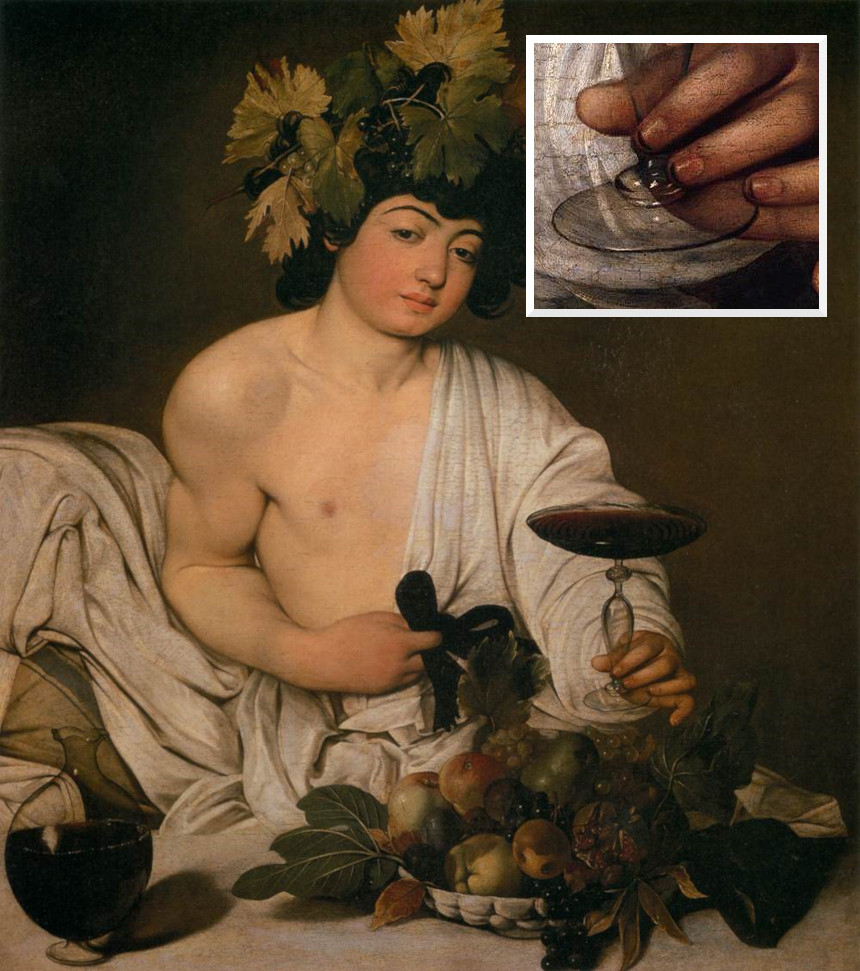
How shocking! But by painting the “real” hands of workmen and peasants, Caravaggio transformed the meaning of his paintings.
Because hands are so difficult to paint, many artists try to avoid painting them. They hide them in pockets or behind backs, as Elbert McGran Jackson did in this cover for the Post:
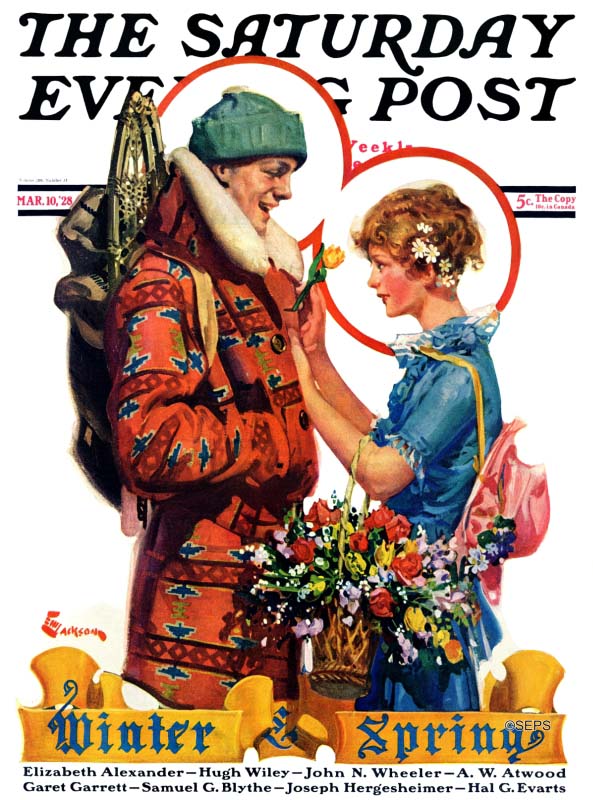
Many artists feel they can get by with hiding hands or giving them perfunctory treatment because hands are rarely central to a picture. They aren’t worth the trouble. Artists who want to realize the full potential for hands must exert a lot of additional effort.
If you look at almost any Rockwell painting, you’ll notice he went out of his way not only to draw hands, but to feature them prominently, and in the most interesting and expressive ways.
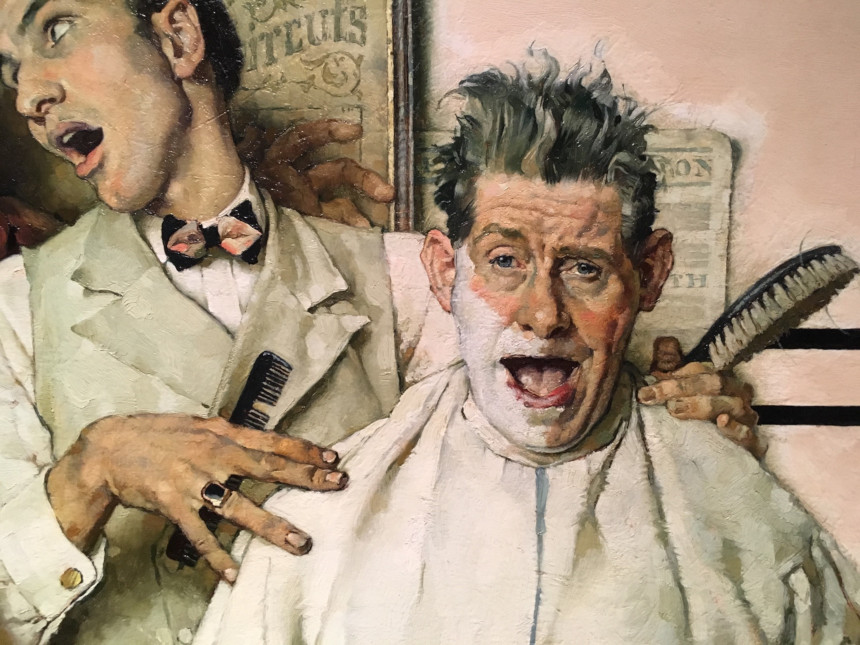
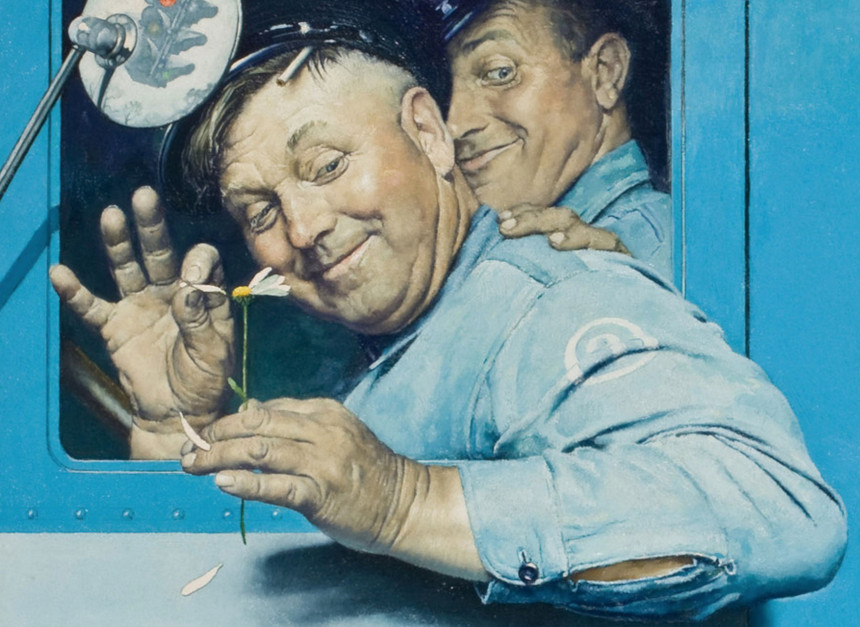
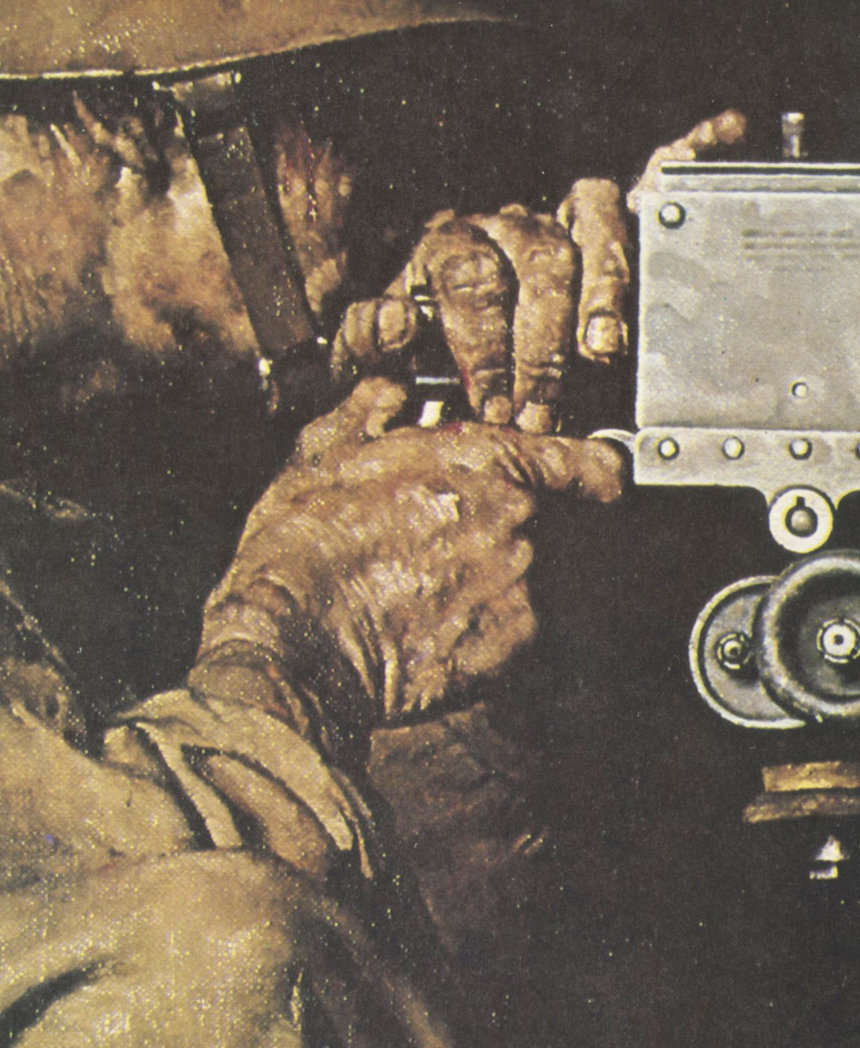
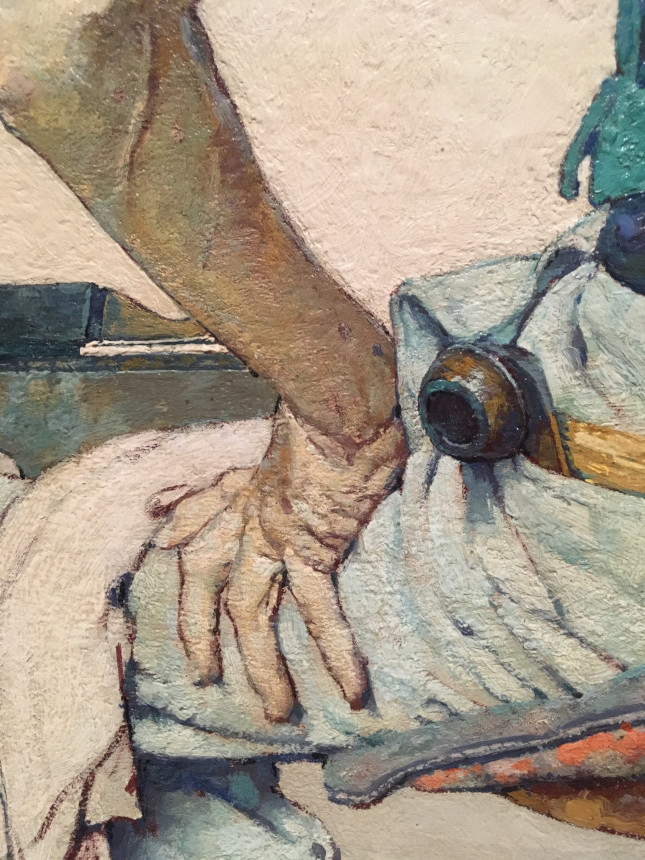
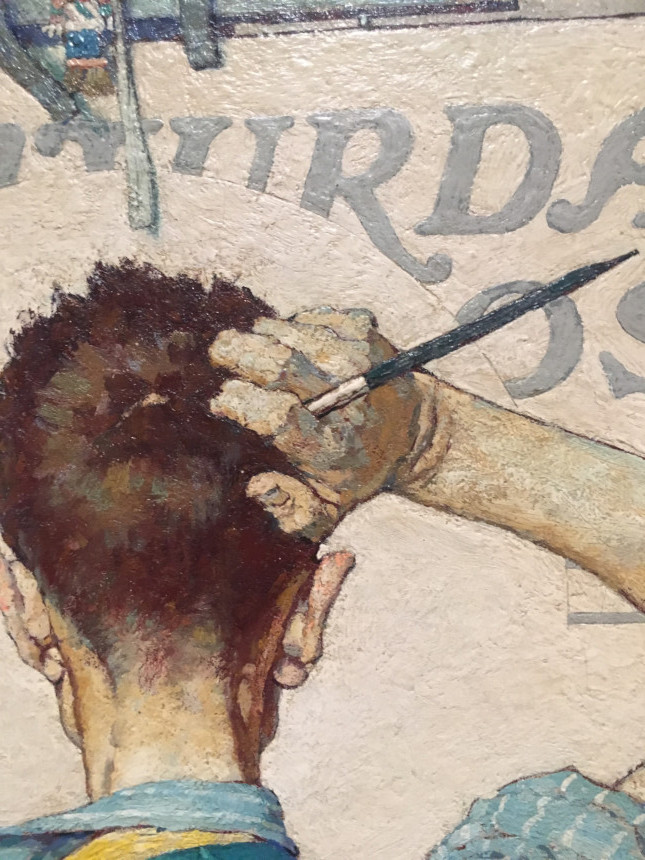
This required a great deal of additional effort, but the artist in Rockwell believed they were important to the overall painting.
Remember Caravaggio’s authentic hands of the workers and peasants? When Rockwell wanted to paint a common laborer standing up and expressing his opinion under the First Amendment, he was careful to show a workingman’s hands:
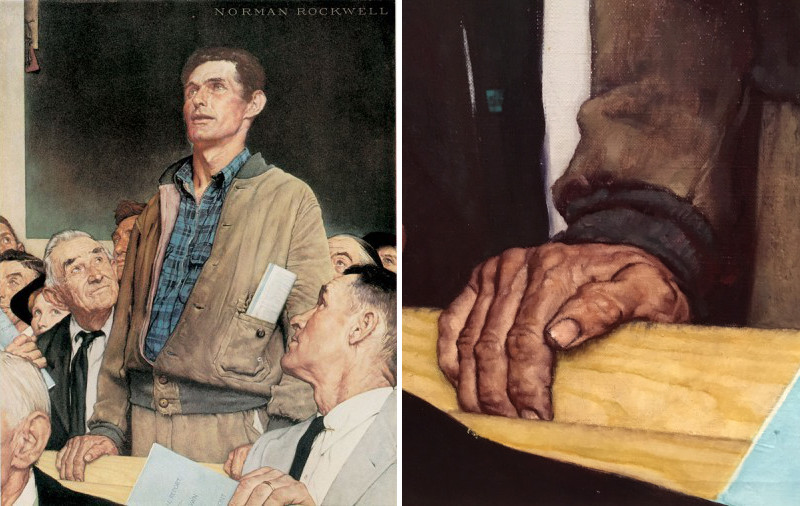
It would’ve been easy for Rockwell to avoid the extra work of painting another hand, but he clearly felt it was an important ingredient in his message about this man.
Rockwell’s hands are skillful, lovely and worthy of our attention, but what else do they tell us about Rockwell as an artist?
They reveal that Rockwell was a “materialist” in the best, old fashioned sense of the word. He had a rare appreciation for our material surroundings, their colors and patterns and textures, the nuances of skin as well as the structure of bone and muscle beneath the skin.
The way Rockwell painted hands gives us insight into an artistic virtue at the core of his work: his extraordinary ability to see the richness of our surroundings and draw our attention to the potential for poetry in even the humblest of details. Unlike some other fine artists, Rockwell did it for a broad audience and he did it under deadline. Still, as artistic virtues go, it’s hard to beat that one.
Featured image: Norman Rockwell, SEPS
Become a Saturday Evening Post member and enjoy unlimited access. Subscribe now
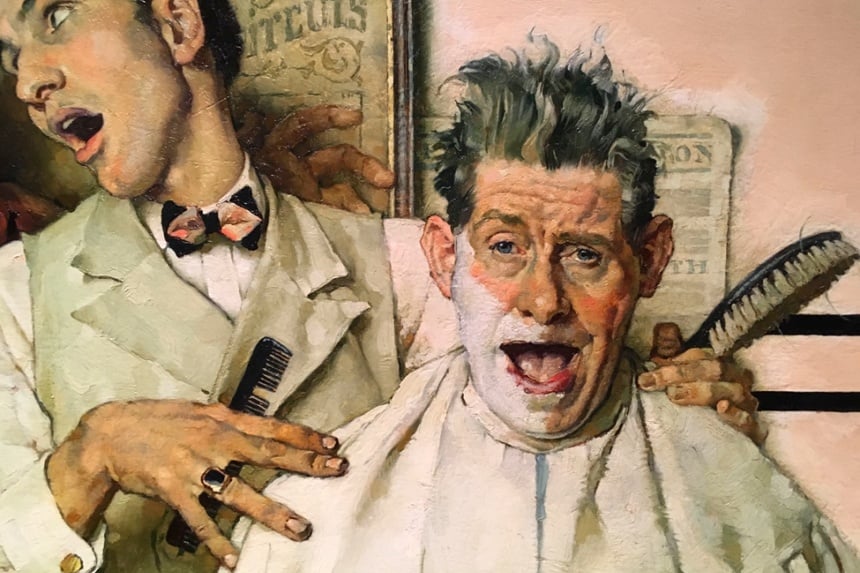



Comments
Great article – Thanks! I now view Rockwell’s work in a completely different light!
93 year old lady still looking forward to SaturdayEvening Post. wonderful memories! Grandson truly enjoys sharing the time with me.Bless you all.
My husband and I were married on Aug. 20, 1948. We did not subscribe to the Post but picked up our copy on the way home from work. We walked the mile and a half. When we got home, I fixed dinner while my husband read the continued story in the Post. My husband has passed away but I still get the Post.
Rockwell is a legendary artist
What interesting insight! Rockwell *did* do a wonderful job with hands, didn’t he!?